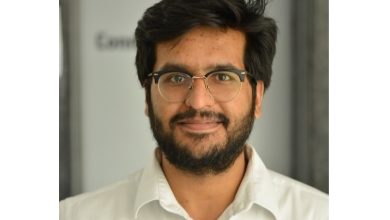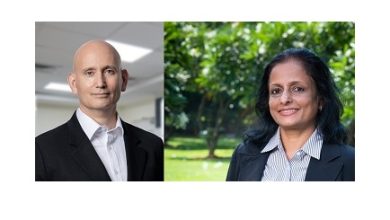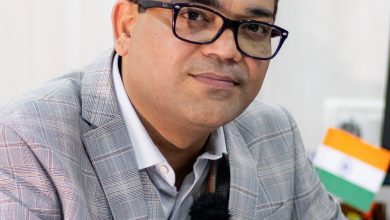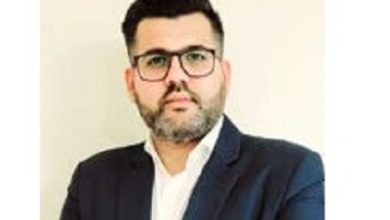There is a critical requirement for patient capital to play a catalytic role in funding development

India Health Fund, a Tata Trusts initiative, is collaborating with ACT, a non-profit venture philanthropy platform, to support Salcit Technologies in piloting Swaasa – an AI-led solution that can revolutionise the detection and early treatment of tuberculosis in India. Neetha Joy, Director – ACT For Health, Narayana Rao Sripada, Co-Founder – Salcit Technologies and Madhav Joshi, CEO, India Health Fund reveal more about the collaboration
Why is TB still a public health issue? Can you provide the incidence rate and reasons for the high incidence?
As per the Global TB Report 2021, the estimated incidence of all forms of TB in India for the year 2020 was 188 per 100,000 population. According to government statistics, 2021 witnessed a 19 per cent increase from the previous year in TB patients’ notification — the total number of incident TB patients (new and relapse) notified during 2021 were 19,33,381 as opposed to that 16,28,161 in 2020. In 2021, out of 2.23 crore patients screened for TB through government programmes, 73,772 patients were identified through ACF.
One major issue is that many TB cases go undetected or are misdiagnosed. Additionally, many people do not complete their treatment, leading to deterioration in their condition and the development of drug resistance. Finally, there is a lack of access to quality healthcare for TB patients, including accessibility to point-of-care diagnostics and availability of trained healthcare professionals, particularly in rural and underserved areas.
The high incidence rate of TB in India can be attributed to various factors, including:
- Limited access to healthcare, especially in underserved areas, can lead to delayed diagnosis and treatment, which can worsen the spread of the disease.
- Comorbidities like diabetes, HIV, tobacco smoking, and alcohol impact a person with TB in predisposition and severity.
- Poor living conditions and malnutrition increase the risk of TB.
- The emergence of drug-resistant TB strains is also a major concern as they require more expensive and prolonged treatment, which can be a challenge for the healthcare system.
How does AI help with diagnosing and why AI is important to a healthcare worker’s safety when dealing with TB samples?
Accelerating the pace of timely and accurate diagnoses is imperative and that’s where tech-led innovations like AI can play a pivotal role. For example, AI-powered algorithms can help diagnose TB more accurately and quickly than traditional methods like manual screening. This can be particularly useful in areas where there are few trained healthcare workers or where there are high rates of misdiagnosis.
In addition, digital tools can be used to improve treatment adherence and track patient progress. Such innovations – which combine accuracy in diagnostics, facilitate easier accessibility among underserved communities and provide greater scope for individualised treatment – hold immense promise.
Tech-led diagnostic innovations can also strengthen the process of report generation, and subsequently, equip patients with appropriate treatment plans for their symptoms. These smart tools can also help ease the burden of healthcare workers and support local and national disease surveillance.
However, for technology to tackle TB, there is a critical requirement for patient capital to play a catalytic role in funding the development as well as the piloting and adoption of new technologies. Moreover, there is a dire need for close collaboration with the government so that innovations, once developed, are adopted in national health programmes and can achieve real sustainable impact.
What is the role of tech-led innovation in transforming the public health landscape in India? How does ACT For Health aim to encourage this through this partnership?
Tech-led innovations have a lot of potential to improve healthcare delivery in rural India. The availability of healthcare providers is scarce in rural and underserved areas – that’s where technology can ensure that better care is delivered even with limited access.
For example, accurate and affordable point-of-care diagnostics can greatly improve prognosis and timely treatment for common conditions. Clinical decision support systems can bring expert opinions to the hands of a healthcare worker if driven by protocols. Systems like telemedicine can bring specialist and super-specialist care to the peripheries where such specialists are not available.
How does Swaasa plan to disrupt the early detection of TB using AI?
Swaasa has added the capability to detect the likely presence of Tuberculosis and has completed one validation study at Andhra Medical College, Visakhapatnam. Though the model was found to be reasonably accurate in detecting the likely presence of pulmonary tuberculosis based on cough signatures, large-scale data collection and validation will further help to improvise the accuracy of the platform for making it more reliable for screening genetically diverse subjects under different environmental conditions.
How is the collaboration between ACT For Health, India Health Fund (IHF) and Salcit?
This partnership marks the beginning of a strong collaborative journey amongst like-minded funders that would bring the much-needed focus on infectious diseases. IHF believes that by partnering with ACT, the collective can combine the quantum of philanthropic funds to amplify the support provided to health-tech innovations. By funding Salcit, we’re supporting a potentially game-changer solution that can amplify tech’s ability to reach the patient’s doorstep. The speed, cost-effectiveness and simplicity of the product have the potential to make a tangible difference in screening and diagnosis at scale in a short amount of time.




